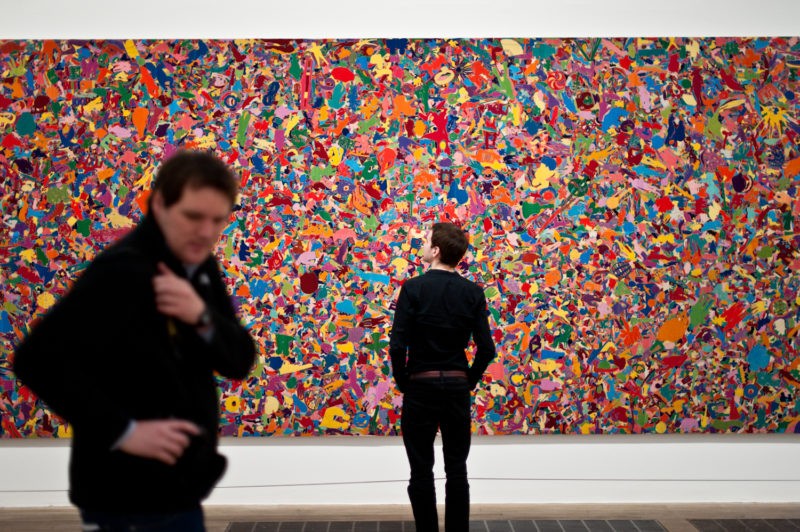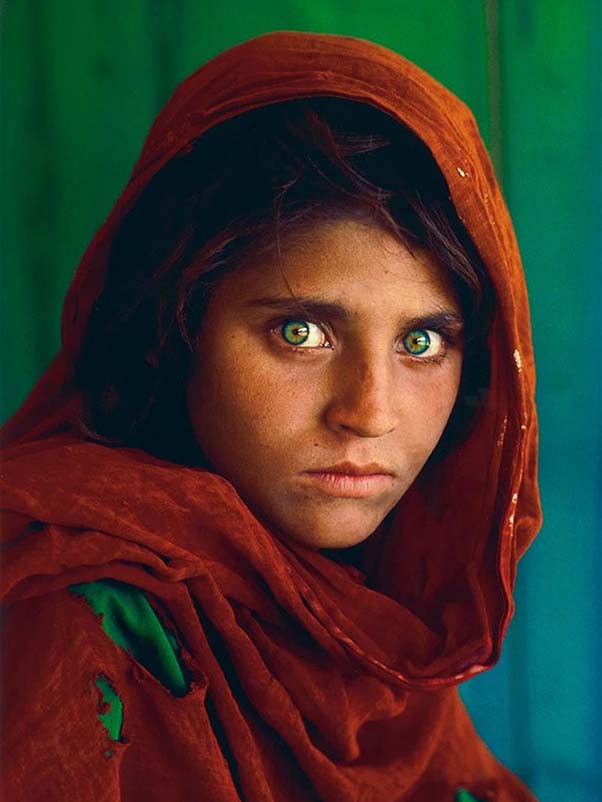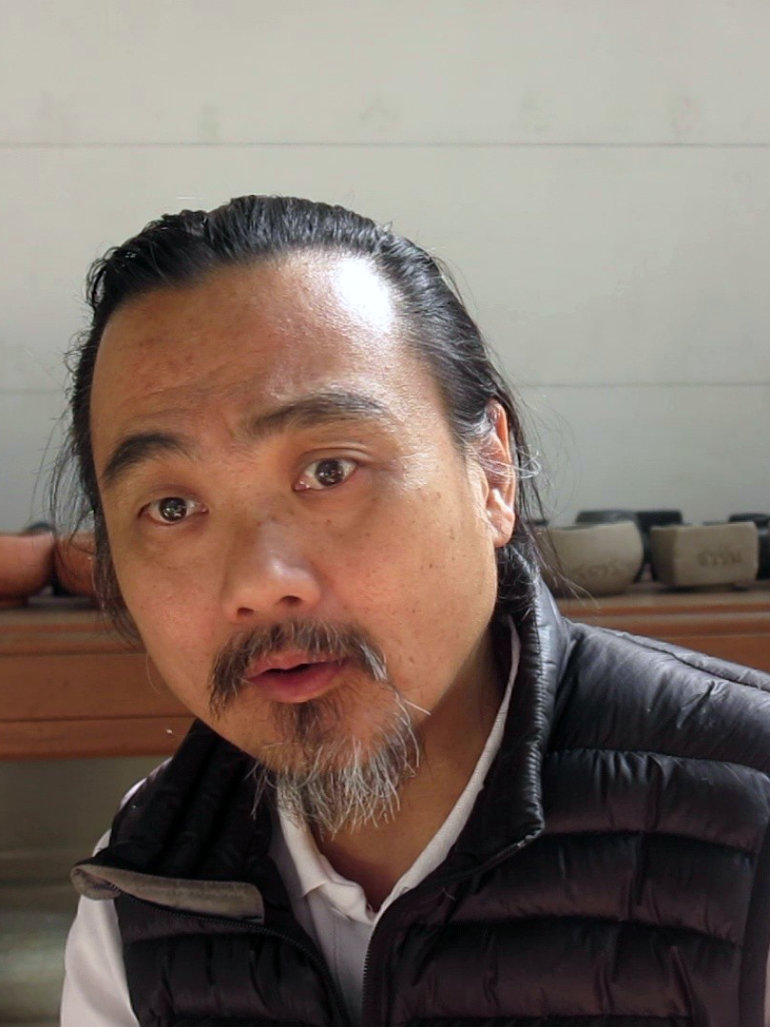
“It would be nice to be two people – one all aware and real, the other all dreamy and unconscious – who go hand in hand, without ever mingling,” – Alighiero Boetti.
Biography
Childhood
Childhood
Alighiero Boetti 1 was a prominent Italian Conceptual artist and Arte Povera 23 movement member. As he grew up in Turin, Italy, where he was born in 1940, Boetti expressed creativity from an early age even though he did not receive any formal art training and became intrigued by the harmony of dualism and the duality of life.
Education
In his youth, Boetti fed his profound eclectic mix of theoretical interests by studying diverse topics such as music, esotericism, alchemy, philosophy and mathematics. He used the knowledge he gleaned from these topics of interest to feed his artistic fire. He then attended the University of Turin’s business school before dropping out to work as an artist. While no orthodox training that he received has been recorded, he, however, studied engraving in Paris at age 20 and formed relationships with renowned artists such as Michelangelo Pistoletto 4, Luciano Fabro and Mario Merz. They influenced his early artistic silhouette paintings and objects of ordinary and familiar items. His fascination with the qualities of everyday materials originated from his childhood.
Boetti’s work
Boetti’s work, while retaining his artistic hand, evolved throughout his life. In his teen years, he created oil paintings reminiscent of Nicolas de Stael 56, a Russian painter. In his twenties, after he got married in 1964, he worked in Turin with Giulio Paolini, Michelangelo Pistoletto, and other Turinese artists. Here, he established himself as one of the best Arte Povera 7 movement artists. Besides using his theoretical interests and passion for non-western cultures, Boetti’s work was also poetic, enchanting and drew influence from his extensive travels.

Starting to create map works
The Conceptual artist used a wide-ranging variety of materials to create his art, such as postage stamps, ballpoint pens, and textiles to make world maps and graphical charts. For instance, in 1967, he made the Twelve Shapes Starting from 10 June 1967 in honor of the Israeli Six-Day War. This artwork depicted the political crises that were present in the conflict through the use of maps.

Other mixed media works
Employing mathematics, logic and a touch of randomness, Boetti’s work allowed the enchanting qualities of maps, grids, postal systems, lists and workday institutions, rather ordinary things, to shine through. His wide variety of artwork employing the use of familiar items and systems is a testament to this. Untitled – Victoria Boogie Woogie was one such piece of art made from 42 framed collages of envelopes, each of which bore seven Italian stamps with a range of rich colors. The result is a mix of color and elegance one would not particularly expect from envelopes and postage stamps.
First trips to Afghanistan & Pakistan
Boetti further incorporated the methodical arrangement of words and text in his work. He is also known to have enjoyed collaborating with others such as the artisan embroiderers in Afghanistan 8 and Pakistan 9 for his Mappa 1011 series, and the Italian postal system to create Postal Dossier. Due to his love of using various materials, when he first visited Afghanistan in 1971, he adopted the local embroidery traditions as his artistic medium. Once he had the design in mind, Boetti would give precise instructions to embroiderers in Afghanistan and Pakistan to recreate drawings with silk thread on fabric.
Arazzi works
Introduction
Introduction
Of these embroidered artworks, arazzi, which are word squares, are regarded as the most intensely vivid conceptual art that catches one’s eyes. Incorporating a grid-like mosaic of block letters whose meanings were often hard to decipher was the artist’s way of contrasting order and disorder. While the design was Boetti’s own, he gave free rein for the embroiderers in choosing the colors to use. These were made in the 1980s and 1990s and often combined Italian and Persian texts and contrasted the geometric vs. the flowing patterns that formed sayings, poems, titles, the artist’s name and his collaborator’s home cities.

Persian, Farsi & Italian phrases
The Afghan craftsmen who had fled their country to Pakistan used Persian text and Farsi script to lament their nostalgic feelings of missing Afghanistan and express anti-Soviet sentiments. They also incorporated empowering sayings from well-known Afghan poets. However, the smaller embroideries of arazzi comprised common Italian phrases arranged to fill a square grid. Such phrases included ‘II silenzio e d’oro’, which translates to ‘silence is golden’ and ‘Fuso Ma Non Confuso’ (melted but not confused), among others.

The meaning of the tapestries
Besides the arazzi artworks, Boetti also employed the expertise of embroiderers in creating earlier work such as square tapestries 12 featuring embroidered flowers and dates, of which one was Boetti’s 100th birthday and the other, a death prediction date (July 11, 2023). Other embroidered art included the map series, such as one tapestry that filled continent areas with national flags to represent fragile global politics. He considered the embroidered maps to represent ‘supreme beauty’. It was also a way of making the basic idea of the world map and the individual countries’ existing flags combine in an artistic concept that illustrated individuality and patriotism. Such was the thought process of this great Conceptual artist.


Conclusion
Up until his premature death in 1987, Boetti was in the process of creating his most complex and biggest tapestry yet, Tutto that he devoted his time to depict the world’s cultural diversity. Together with his assistant, Iranian Mahshid Mussari, they collected a wide variety of motif patterns to include in this canvas that represents the world’s complexity. Sadly, he died without getting to complete this piece. What sets Boetti’s art apart is the importance of his work’s social dimension, his use of mathematical logic, esoteric, different Eastern cultures and the concept of order vs. disorder. He also regarded art as a game that draws the audience’s participation in deciphering the writings, the code, and the theme behind each piece.


Accolades
Since his death, Alighiero Boetti has been honored posthumously. Large-scale 13 exhibitions of his work were shown in museums such as Vienna’s and Frankfurt’s Museum fur Moderne Kunst in 19997 and 1998, respectively. In 2001, an exhibition was organized by the Gagosian Gallery in collaboration with Rome’s Archivo Boetti and was accompanied by a completely illustrated catalog of Boetti’s complete works. His last work, Tutto, is now one of Frankfurt’s Museum of Modern Art’s collection.

Explore nearby
Peshawar, Pakistan
 Alighiero Boetti's Maps of the WorldProduction of artworks (1979-1994)14 km away
Alighiero Boetti's Maps of the WorldProduction of artworks (1979-1994)14 km away The story of Steve McCurry & Sharbat Gula, the Afghan GirlPhoto documentation (1984)14 km away
The story of Steve McCurry & Sharbat Gula, the Afghan GirlPhoto documentation (1984)14 km away Stephen Dupont's warzone photosPhoto documentation (1998-2009)225 km away
Stephen Dupont's warzone photosPhoto documentation (1998-2009)225 km away








